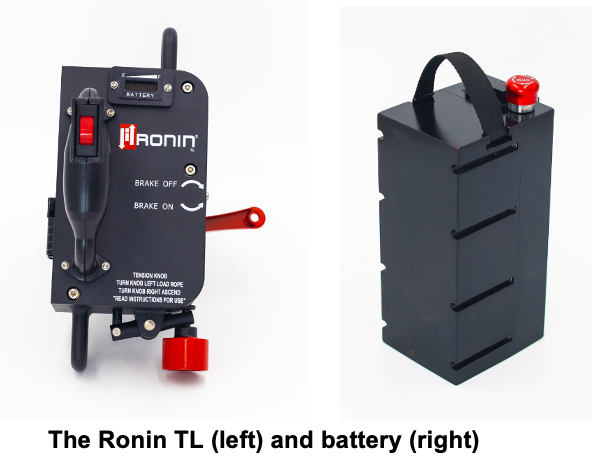The Ronin Lift enables tower technicians to quickly and safely ascend towers, improving focus and stamina by lowering physical exertion, according to the company. The technology evolved from elite military technology, including helicopter rescue hoists, currently in use in coast guard, mountain, and search and rescue missions.
The wireless industry’s continued 5G rollout and commitment to infrastructure projects have increased the need for skilled technicians to deploy sophisticated communication technology on a wide variety of elevated structures. With Ronin equipment, telecom and utility communication network crews now have an alternative to climbing towers manually.
Ronin recently announced its product lineup for 2023. This year’s product enhancements focus on durability, affordability, and lighter weight, in addition to safety and efficiency on the job site. Along with the Ronin Lift, there is the Non-HEC material hauler, and two smaller and lighter units, the Ronin TL and the military focused ascender the STL, which is the most powerful and smallest ascender in the market.
“Our goal at Ronin has always been to make the most accessible power ascenders in the marketplace. Part of this is decreasing the size of this technology, making it more portable, as well as making it affordable,” said Bryant Bertrand, CEO and Co-founder of Ronin.
At 19 pounds with the battery, the Ronin TL is the smallest, lightest ascender available in the marketplace, according to Bertrand. The TL provides 400 pounds safe working load at an ascension rate up to one and a half feet per second. The battery is a 48-volt system, including a nylon tethering strap and emergency stop button to kill power, as well as a battery indicator light so users can check the battery power when they’re not attached to the unit.
The Ronin STL is the same weight and size as the TL, but has a much higher speed. It can ascend at two and a half feet per second and descend at four and a half feet per second at 350 pounds.
“The STL is the fastest ascender available in the marketplace and should really be differential in changing the way ascension is done for tactical emergency response operations,” Bertrand said.
The Non-HEC material hauler is like the Ronin Lift, only it is designed to lift material instead of people. While the Ronin Lift can be used for material as well as people, Ronin is supporting the industry’s need to separate equipment used for material hauling from personal ascension by creating a separate unit with the correct labeling and ID controls for material winching.
“What we want to do is avoid putting people on the same unit that you’re lifting material on,” Bertrand said. The color-coding system easily differentiates material-hauling equipment from personal-ascension equipment.” The material hauler is white for clear distinction with an ID plate designating it for material.
This year’s models of Ronin’s all have steel inlets and outlets added for the rope, which reduce wear and tear on the unit especially when used with different pitches and angles. “We’ve also changed some of the internal components to stainless steel to help improve the longevity of the units,” Bertrand said. “Changes to the thumb wheel so that it is a ‘full-stroke’ thumb wheel have been made to add better fidelity of control for the variable speed within the device.”
Bertrand added, “although our products continue to evolve, our focus on safety and efficiency is always central to that evolution.”
For more information, contact Ronin at https://roninpowerascender.com/.
By J. Sharpe Smith, Inside Towers Technology Editor





Reader Interactions